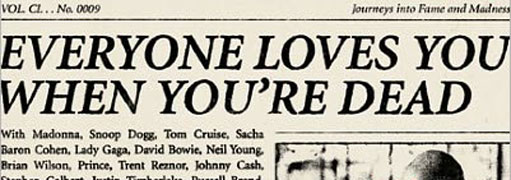Book Review: Everyone Loves You When You’re Dead By Neil Strauss
Rolling Stone Writer Compiles Greatest Hits (And Misses)


Latest Article|September 3, 2020|Free
::Making Grown Men Cry Since 1992




